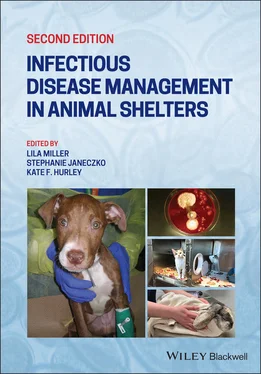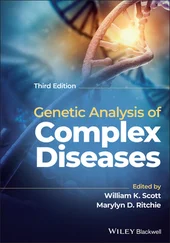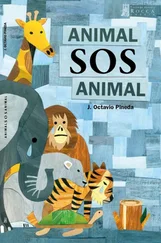30 23 Feline Leukemia and Feline Immunodeficiency Viruses 23.1 Introduction 23.2 Prevention and Control 23.3 Conclusion References
31 24 Exotic Companion Mammals (Ferrets, Rabbits, Guinea Pigs and Rodents) 24.1 Introduction 24.2 Ferrets 24.3 Rabbits 24.4 Guinea Pigs 24.5 Altricial Rodents (Rats, Mice, Hamsters, and Gerbils) 24.6 Conclusion References
32 Index
33 End User License Agreement
1 Chapter 2 Table 2.1 The Five Freedoms. Table 2.2 Recommended components of a wellness protocol for shelter cats and ... Table 2.3 Recommended components of a wellness protocol for the shelter envir... Table 2.4 Recommended minimum database for cats and dogs in the shelter. Table 2.5 Resources for cat housing.
2 Chapter 3 Table 3.1 Annual medical profile in an adoption guarantee shelter. Table 3.2 Log of events and protocol changes for 2015. Table 3.3 The effect of lowering ALOS on the estimated number of cats that ca...
3 Chapter 4 Table 4.1 Clinical case history questions for private and shelter practice. Table 4.2 Physical examination approach, normal findings and common abnormali... Table 4.3 Common diagnostic tests, indications, and collection and handling t... Table 4.4 ELISA technique variations (Tizard 2013). Table 4.5 Inflammatory lesions and infectious differential diagnoses (Rakich ... Table 4.6 Surveillance testing sample sizes for ≥90% probability of detection...
4 Chapter 5 Table 5.1 Reasons to perform a necropsy in a shelter. Table 5.2 Necropsy kit. Table 5.3 Resources for performing a complete necropsy. Table 5.4 Necropsy and sampling for GI disease.
5 Chapter 6 Table 6.1 Considerations for infectious disease policies. Table 6.2 Considerations for outbreak management plans. Table 6.3 Considerations for disease specific protocols. Table 6.4 Parvovirus attack rates (AR) for 80 shelter dogs. Table 6.5 Parvovirus attack rate (AR) for 41 shelter dogs not vaccinated prio...
6 Chapter 7Table 7.1 Common study types in veterinary therapeutics ranked in order of po...Table 7.2 Questions to uncover common problems or omissions in studies releva...Table 7.3 Selected references on compounding.Table 7.4 Generalized spectra of antimicrobial drugs for use in selecting emp...Table 7.5 Gram staining and oxygen requirement of major veterinary bacterial ...Table 7.6 Pharmacodynamic parameters predicting clinical efficacy by antimicr...
7 Chapter 8Table 8.1 Definitions of commonly used terms.Table 8.2 Disinfectant products.Table 8.3 Essential laundry basics.Table 8.4 CDC Guidelines for proper handwashing (CDC 2015).Table 8.5 The basics of hand sanitizer use.Table 8.6 Shelter Sanitation Resources.
8 Chapter 9Table 9.1 Core vaccination recommendations for animal shelters.Table 9.2 Risk factor determination.
9 Chapter 10Table 10.1 Canine infectious respiratory disease viral and bacterial agents.Table 10.2 Prevalence data of CIRD pathogens recovered on PCR ±culture in asy...Table 10.3 Vaccination recommendations for CIRD in shelter‐housed dogs.Table 10.4 Anti‐microbial treatment options for CIRD in animal shelters.
10 Chapter 12Table 12.1 Diagnostic test results for a canine influenza outbreak in an anim...
11 Chapter 13Table 13.1 Anti‐viral drugs for the treatment of Feline Herpesvirus (FHV‐1) I...Table 13.2 Summary data for published clinical trials of antimicrobials in sh...Table 13.3 Commonly used antimicrobial treatment options for feline bacterial...
12 Chapter 15Table 15.1 Summary of clinical signs associated with feline panleukopenia.Table 15.2 Summary of treatment recommendations.Table 15.3 Summary of host risk factors (UC Davis 2016).Table 15.4 Summary of basic quarantine recommendations.Table 15.5 Which vaccine to use?Table 15.6 Sanitation recommendations.Table 15.7 Overview of characteristics of feline panleukopenia.
13 Chapter 16Table 16.1 Common nomenclature for feline coronavirus biotypes.Table 16.2 Findings that aid in the ante‐mortem diagnosis of FIP.Table 16.3 Experimental treatments for FIP.
14 Chapter 18Table 18.1 Diagnostic testing methods for microfilariae.Table 18.2 Diagnostic test limitations.Table 18.3 Heartworm preventives.Table 18.4 Comparison of heartworm treatment protocols.
15 Chapter 19Table 19.1 List of zoonotic vector‐borne diseases that are relevant for anima...Table 19.2 List of resources for ectoparasites and vector‐borne diseases.
16 Chapter 20Table 20.1 Practice tips for collecting samples and data.Table 20.2 Sample excel sheet for recording data.Table 20.3 Sample of an “ACTION PLAN” for culture positive animals.Table 20.4 Organizing large numbers of culture plates.Table 20.5 Quick guide to reading fungal culture plates.
17 Chapter 21Table 21.1 List of common zoonotic pathogens (Please review detailed informat...Table 21.2 Common zoonotic vector‐borne pathogens.Table 21.3 Common anthroponotic pathogens.
18 Chapter 22Table 22.1 Individual State Requirements Regarding Rabies Vaccine Administrat...Table 22.2 Summary NASPHV Recommendations for Management of Rabies Exposure.
19 Chapter 23Table 23.1 FeLV and FIV testing and vaccination recommendations for cats in a...
20 Chapter 24Table 24.1 Classification of ferret diseases by body system.Table 24.2 Classification of rabbit diseases by body system.Table 24.3 Classification of Guinea pig diseases by body system.Table 24.4 Classification of rodent diseases by body system.
1 Chapter 2 Figure 2.1 (a and b). A commercially available “cat den” serves as a secure ... Figure 2.2 (a and b). Conversion of existing cages into condo‐style units ca... Figure 2.3 Outdoor section of a row of double‐sided kennel runs. Indoor‐outd...
2 Chapter 3 Figure 3.1 Incidence rate of URTD among cats by season. Figure 3.2 Annual survival rates of un‐weaned kittens in foster care 2011–20... Figure 3.3 Average LOS of cats by age group. Figure 3.4 Average LOS of cats with and without URTD by age group.
3 Chapter 4 Figure 4.1 Antibody titration. Figure 4.2 Sensitivity, specificity and predictive value. TP, true positives... Figure 4.3 Infectious disease diagnostic algorithm for clinical signs of com... Figure 4.4 Infectious disease diagnostic algorithm for clinical signs of com... Figure 4.5 Infectious disease diagnostic algorithm for clinical signs of com...
4 Chapter 5 Figure 5.1 The prosector takes a sample of lung. Samples taken for microbiol... Figure 5.2 Euthanasia can cause artifactual changes to tissues. Here the gra... Figure 5.3 Prepare to open the animal by reflecting the skin. A cut along th... Figure 5.4 A properly opened body ready for diagnostic sampling. Figure 5.5 Sections to be submitted for histological analysis need to be thi... Figure 5.6 The intestines, extending from the gastroesophageal junction (arr... Figure 5.7 The ileo‐ceco‐colic junction is pictured. The intestine can be op... Figure 5.8 Canine parvovirus (CPV). The intestines are segmentally thick, ed... Figure 5.9 Feline infectious peritonitis (FIP) virus (feline coronavirus). I...
5 Chapter 6 Figure 6.1 Components of an infectious disease and outbreak management plan.... Figure 6.2 Point source outbreak. Figure 6.3 Continuous source outbreak. Figure 6.4 Propagated outbreak. Figure 6.5 Epidemic curve stratified by location.
6 Chapter 8Figure 8.1 Double compartment housing unit.Figure 8.2 A cat with severe oral ulceration from quaternary ammonium toxici...Figure 8.3 (a)Measuring the “cleanliness” of a shelter animal caregiver's sc...
7 Chapter 11Figure 11.1 A young dog exhibiting squinting that can be a characteristic si...Figure 11.2 A puppy with canine distemper exhibiting marked mucopurulent nas...
8 Chapter 13Figure 13.1 (a) and (b) Ocular discharge and photophobia are common non‐spec...Figure 13.2 Housing cats near dogs should be avoided as it is stressful for ...Figure 13.3 Prompt antimicrobial treatment is required if signs of bacterial...Figure 13.4 Crusted discharges should be cleaned away gently using warm sali...Figure 13.5 (a)–(c) Hiding boxes are an inexpensive and effective way to red...Figure 13.6 Group housing in multi‐cat rooms can provide enrichment for some...Figure 13.7 Crowding and poor‐quality housing poses an important risk to the...
Читать дальше












